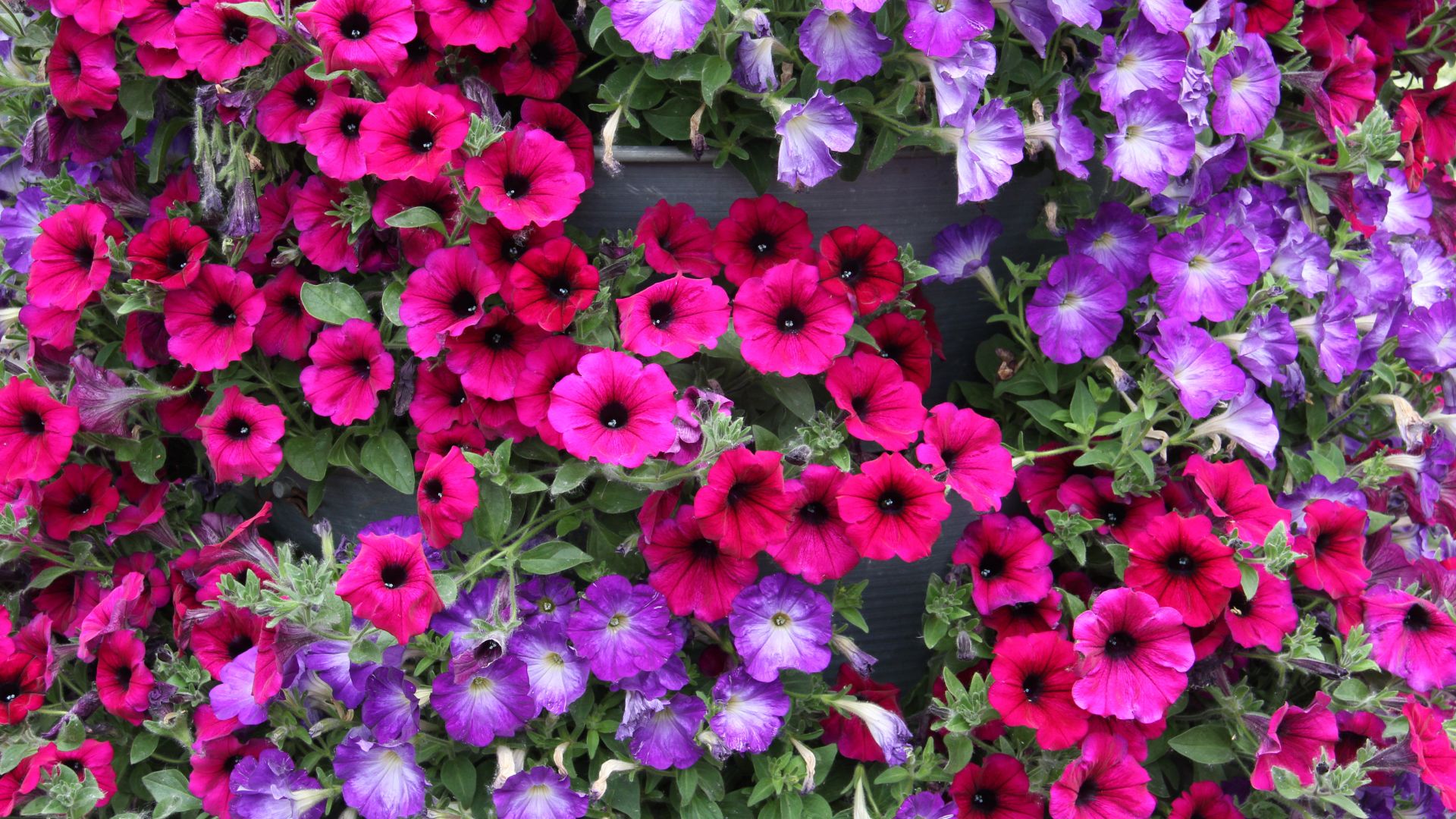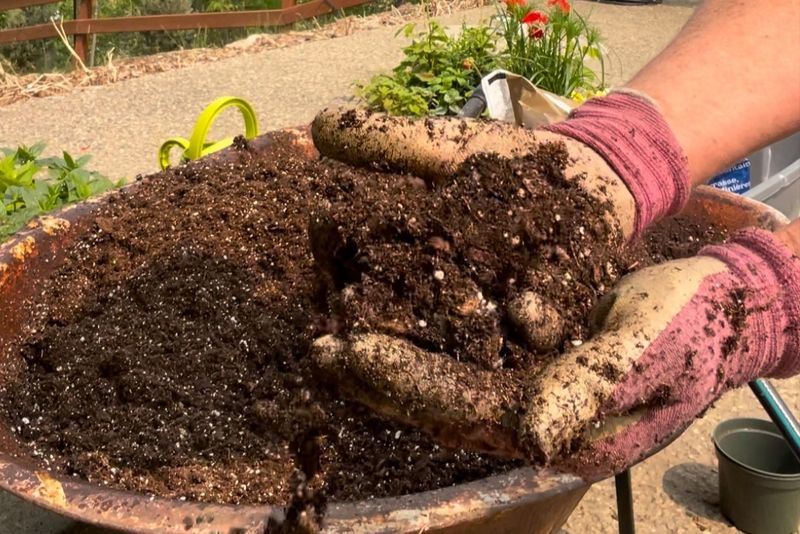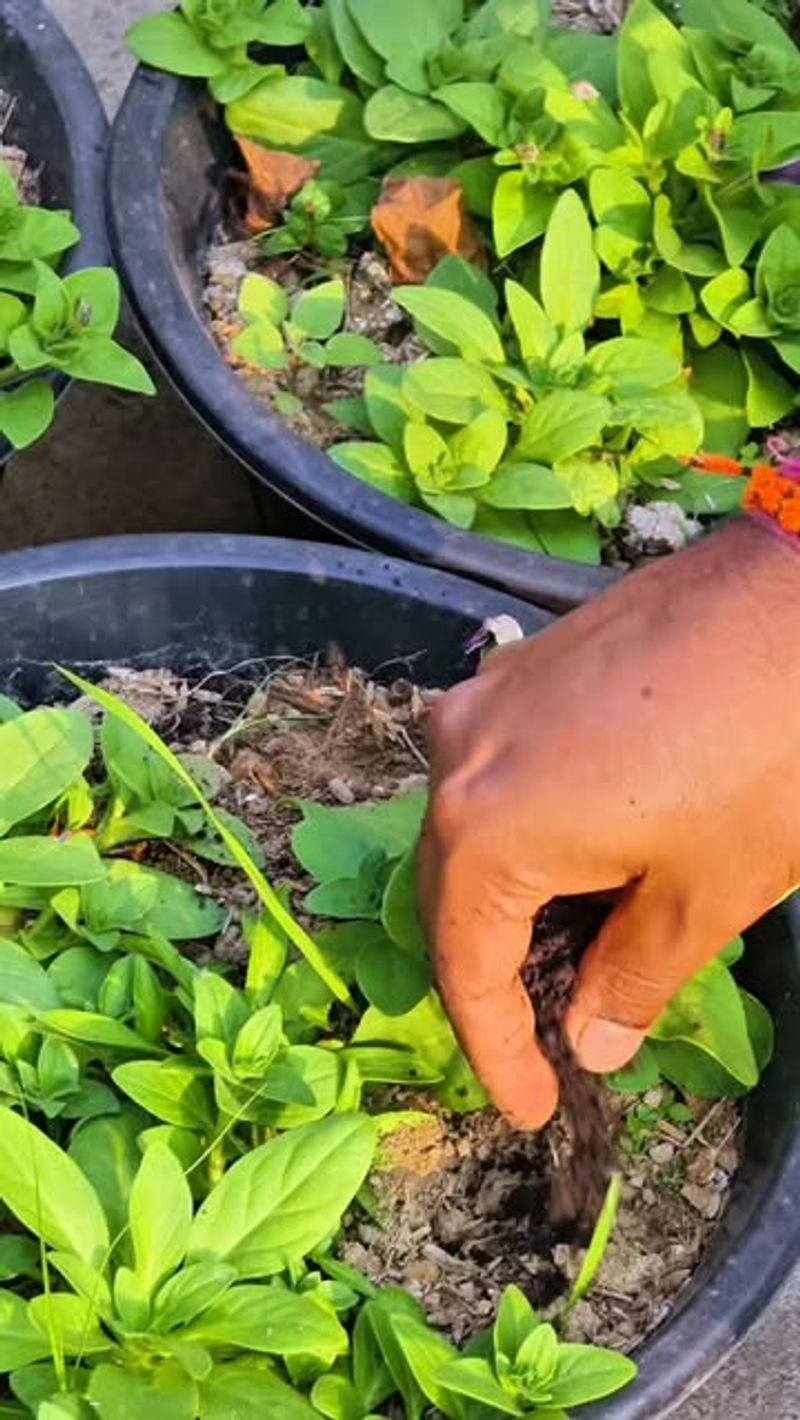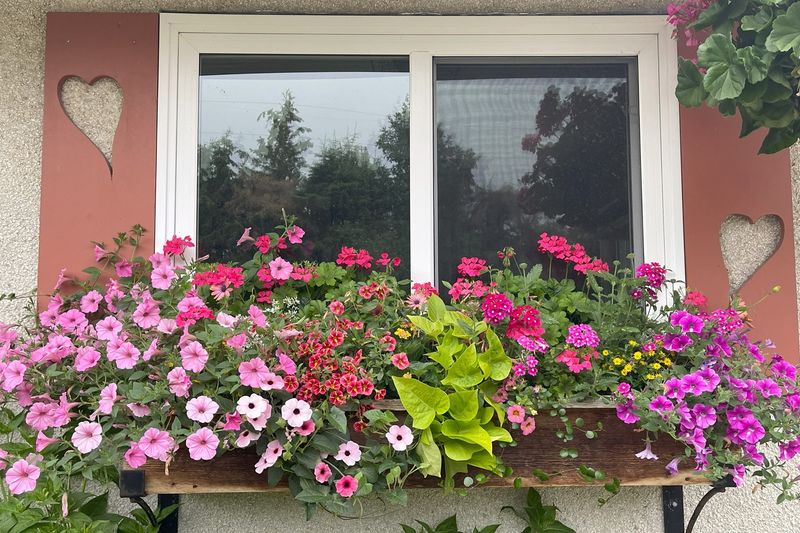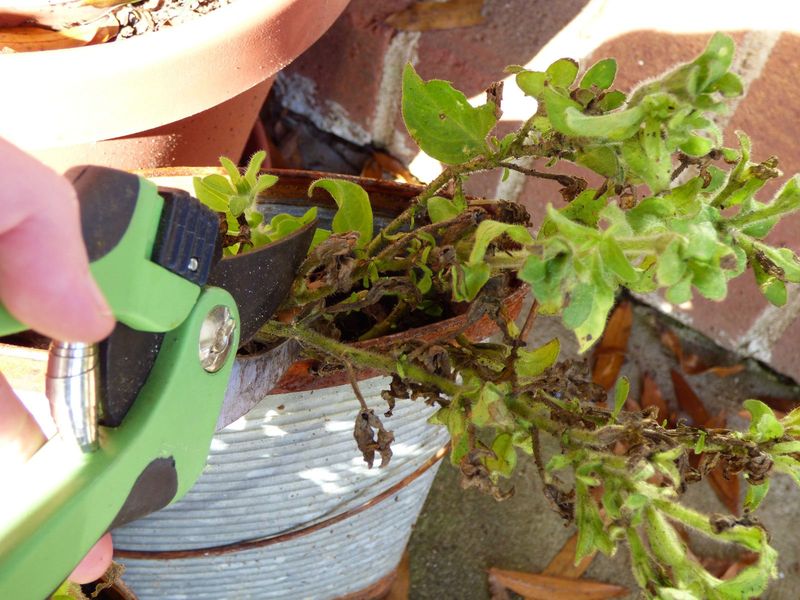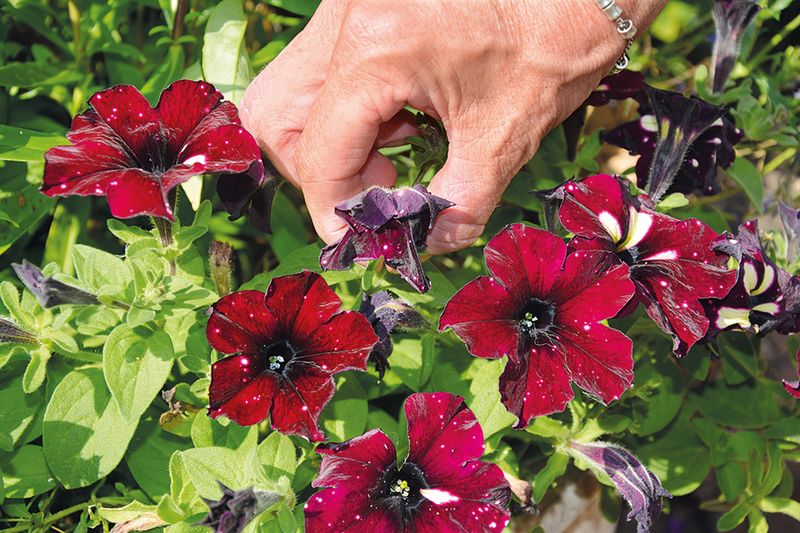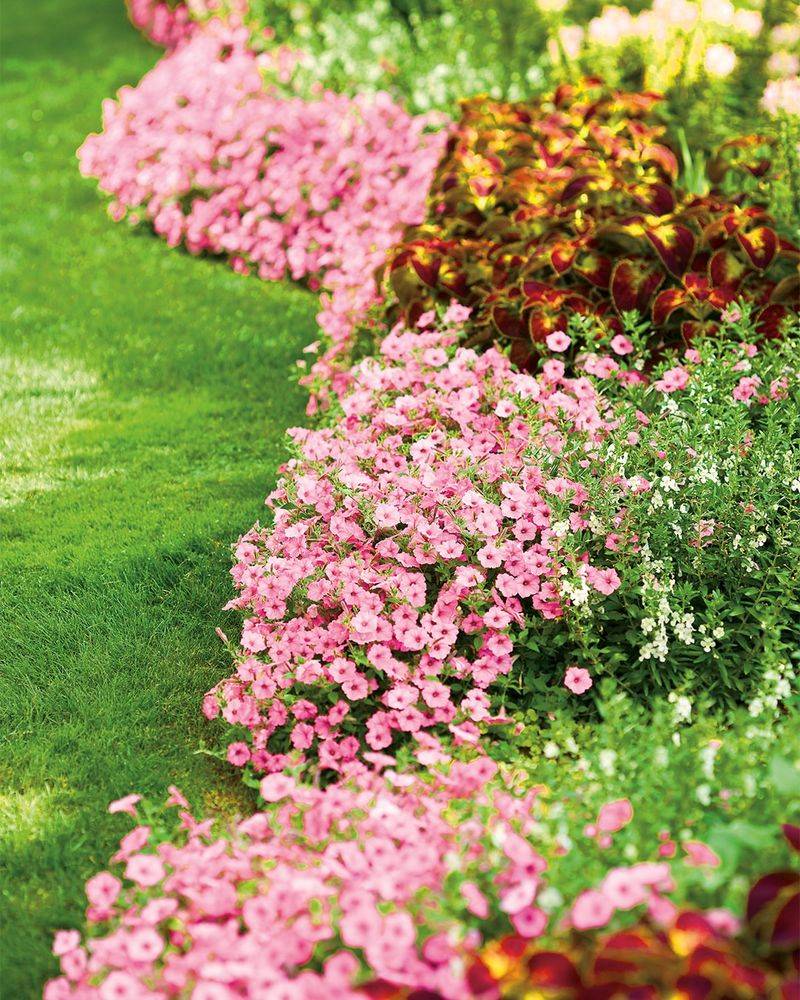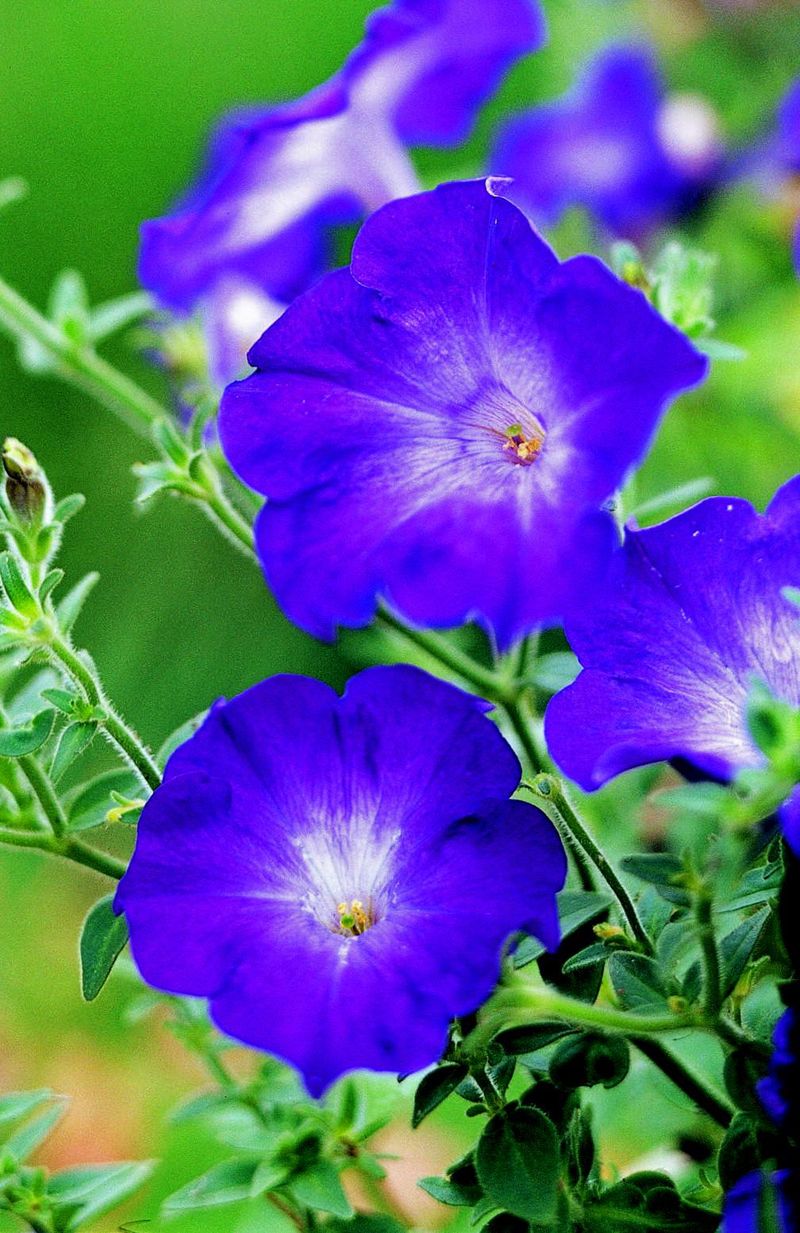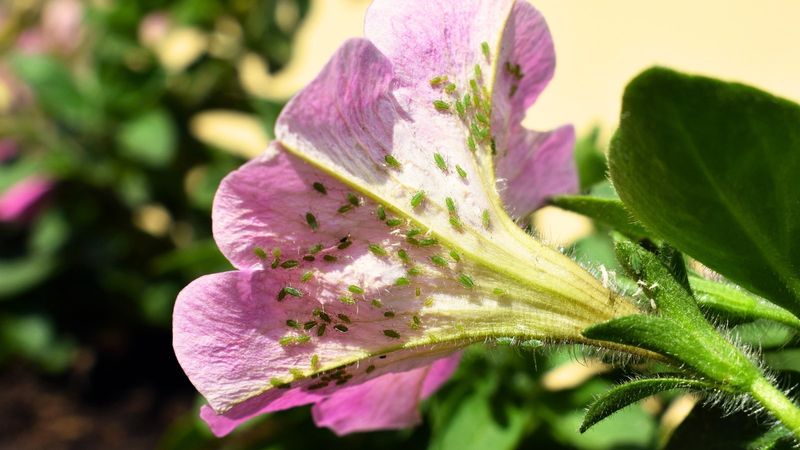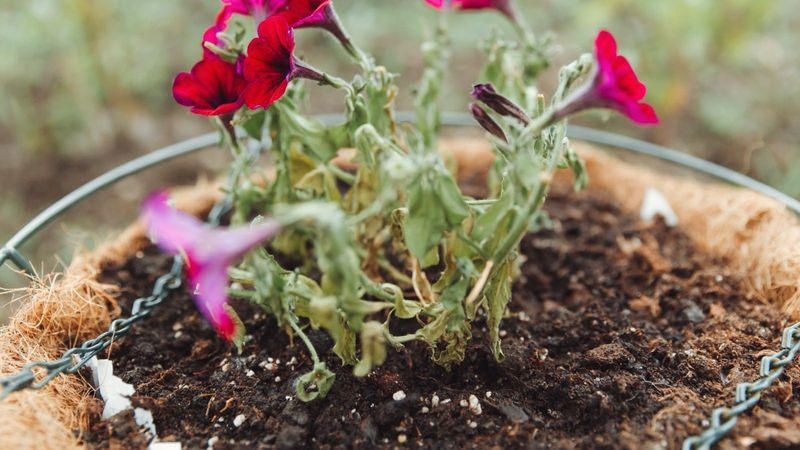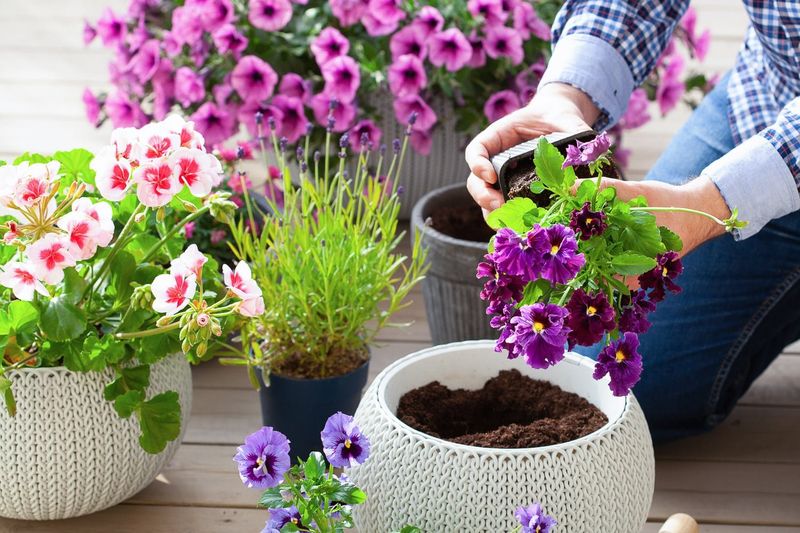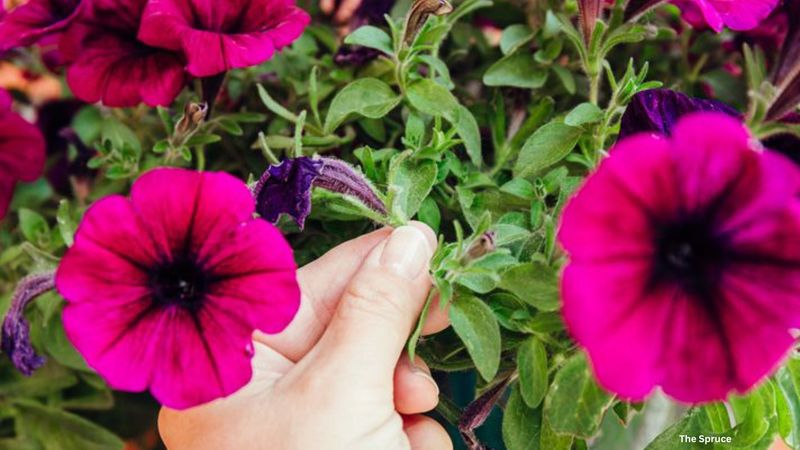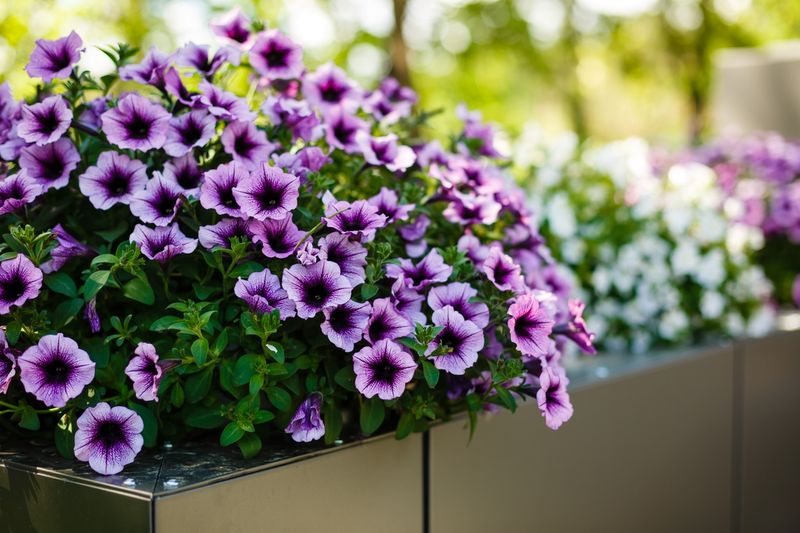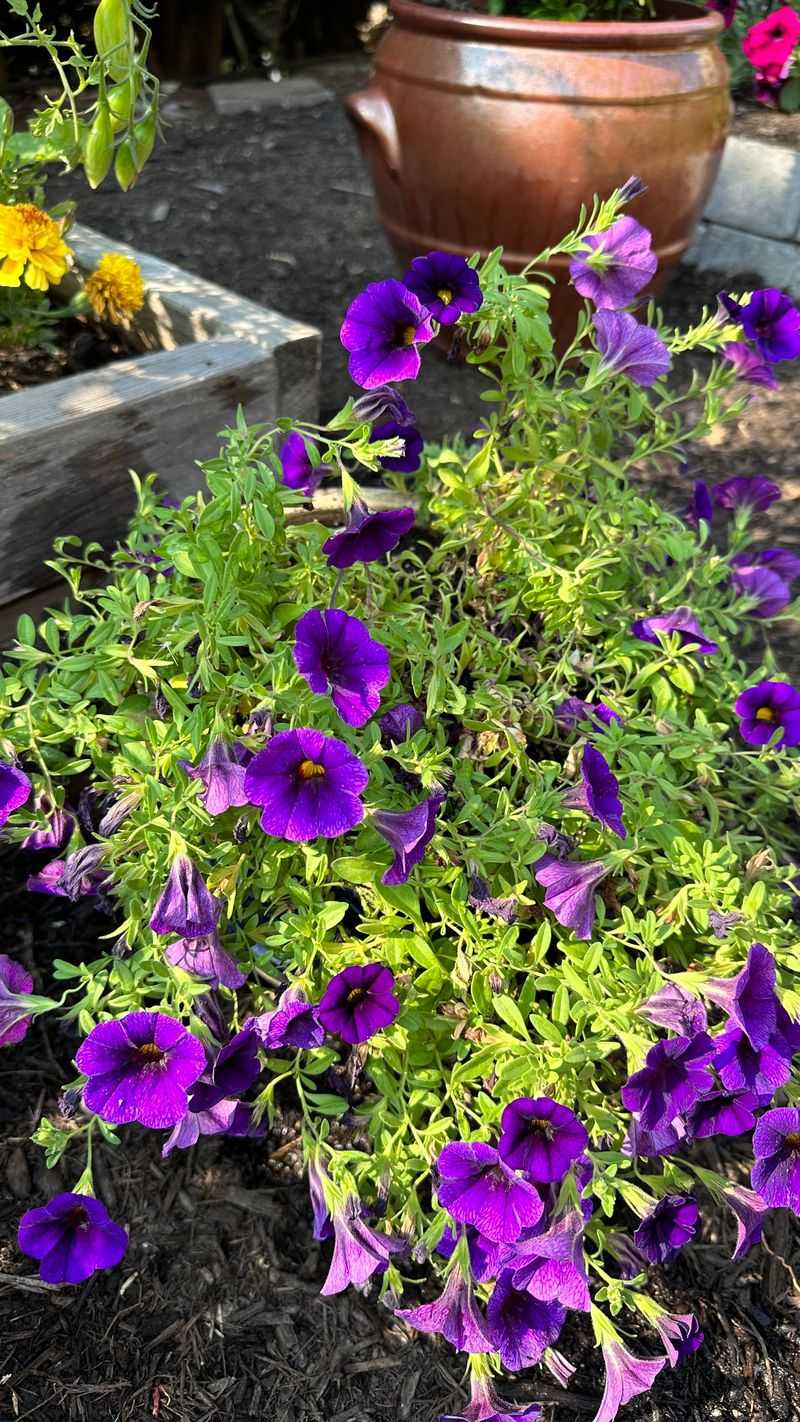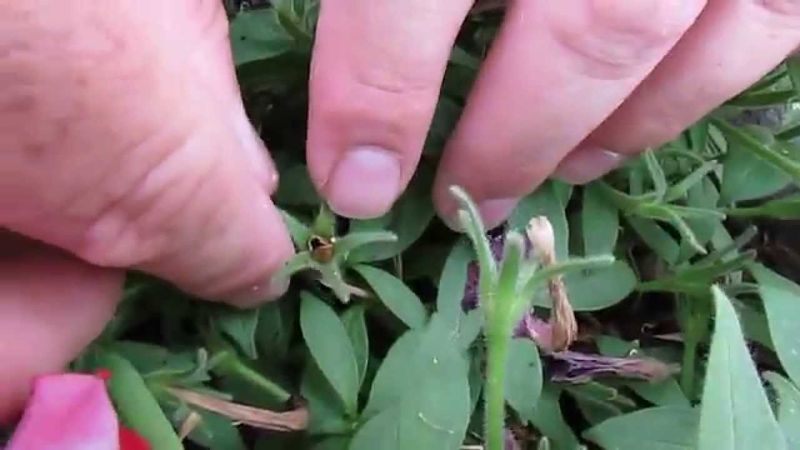Petunias are one of those go-to flowers I plant every summer without even thinking twice. They’re reliable, cheerful, and fill up containers like they were made for the job. Just a few of them can brighten up a dull corner in no time.
What I love most is how many options there are—bold stripes, soft pastels, even ruffled petals if you want a little drama. Whether I’m filling a window box or tucking a few into a flower bed, they always steal the show.
With regular watering and the occasional deadheading (yes, they really do bounce back fast), petunias just keep blooming. From that first pop of color in late spring to the final burst before frost, they never let me down.
1. Choose The Right Varieties
Wave petunias offer exceptional spreading ability and weather resistance compared to traditional varieties. They’ll quickly fill spaces with minimal maintenance.
Multiflora types produce smaller but more numerous flowers, perfect for areas that need dense color coverage. I’ve found these particularly effective in my front border where they create a carpet effect.
For containers, try the Supertunia series which rarely needs deadheading and bounces back quickly after rain.
2. Start With Quality Soil
Garden soil alone won’t cut it for these hungry bloomers. Create a mix with equal parts potting soil, compost, and perlite to ensure proper drainage while retaining nutrients.
The pH should be slightly acidic to neutral (6.0-7.0) for optimal nutrient absorption. Last season, my plants struggled until I adjusted the soil pH with a bit of garden sulfur.
When planting in containers, avoid reusing old potting mix which may harbor disease or lack nutrients.
3. Master The Watering Schedule
Morning watering gives plants time to dry before evening, reducing disease risk. Focus the water at the base rather than overhead to keep foliage dry.
Container petunias typically need daily watering during hot weather, while in-ground plants can usually go 2-3 days between waterings once established. I’ve started using moisture meters in my containers to prevent guesswork.
Apply a layer of mulch around plants to retain moisture and reduce watering frequency during summer heat waves.
4. Feed Regularly For Continuous Blooms
Unlike some perennials, petunias are heavy feeders that require consistent nutrition. Apply a balanced water-soluble fertilizer every 1-2 weeks throughout the growing season.
Slow-release fertilizers work wonderfully as a supplement, providing steady nutrition between liquid feedings. When my plants started looking pale last June, increasing the feeding schedule brought back their vigor within days.
Reduce fertilizer by half in extremely hot periods when plants naturally slow their growth to conserve energy.
5. Perfect Your Pruning Technique
Leggy stems can make even the prettiest petunias look scraggly by midsummer. When stems reach 6-8 inches, pinch them back by one-third to encourage branching and fuller growth.
Don’t be afraid to get aggressive with mid-season haircuts. I once cut back my hanging baskets by half in July when they started looking tired, and they rebounded with even more flowers within two weeks.
Use clean, sharp scissors rather than pinching with fingernails to make clean cuts that heal quickly.
6. Deadhead Strategically
Spent blooms aren’t just unsightly—they signal the plant to produce seeds instead of new flowers. Remove faded flowers by pinching the stem just below the bloom and above a leaf node.
For varieties with sticky stems, keep a small container of rubbing alcohol nearby to clean your fingers between pinches. This trick saved me hours of hand-washing during my weekly deadheading sessions.
Focus deadheading efforts on the most visible areas if time is limited, as some newer varieties are self-cleaning.
7. Provide Proper Sunlight
Most varieties thrive with at least 6 hours of direct sunlight daily. Eastern or southern exposures typically offer ideal light conditions without afternoon scorching.
In regions with intense summer heat, light afternoon shade can prevent flower drop and color fading. My patio containers under dappled shade outperformed the full-sun ones during last August’s heat wave.
Rotate container plants weekly to ensure even growth, as petunias will stretch toward light sources if left in one position too long.
8. Space Plants Correctly
Overcrowding leads to poor air circulation and disease problems. Standard varieties need 12 inches between plants, while spreading types require 18-24 inches.
Consider mature size rather than how plants look at planting time. The tiny seedlings I planted 18 inches apart looked sparse initially but filled in beautifully by July without competing for resources.
In containers, limit plants to avoid overcrowding—a 10-inch pot can support 2-3 regular petunias or just one spreading variety for optimal growth.
9. Prevent Common Pests
Aphids and tobacco budworms are the main culprits that damage petunias. Inspect the undersides of leaves weekly and spray with insecticidal soap at the first sign of pests.
Beneficial insects like ladybugs can be your allies in pest management. Releasing them in the evening hours helps them settle into your garden rather than flying away immediately.
For budworm problems, applying Bacillus thuringiensis (Bt) provides effective organic control without harming pollinators that visit your flowers.
10. Combat Diseases Early
Botrytis blight and powdery mildew can quickly spread through petunia plantings. Improve air circulation by proper spacing and pruning to reduce humidity around plants.
Water at soil level rather than overhead to keep foliage dry. When I noticed gray mold starting on a few blooms last summer, removing affected parts and improving airflow stopped the spread within days.
Apply a fungicide labeled for ornamentals at the first sign of disease, especially during periods of high humidity or frequent rain.
11. Optimize Container Drainage
Soggy roots lead to yellowing leaves and eventual plant death. Ensure containers have multiple drainage holes—I drill extra ones in plastic pots for insurance against waterlogging.
Elevate pots slightly using pot feet or small rocks to prevent drainage holes from becoming blocked. This simple adjustment saved my deck planters during last year’s rainy weeks.
Line the bottom of containers with a thin layer of gravel or broken pottery pieces to improve drainage while preventing soil from washing out.
12. Refresh Mid-Season For Fall Blooms
By August, even well-maintained petunias can look tired. Cut back leggy growth by half and apply a dose of balanced fertilizer to stimulate new growth.
Remove any diseased or yellowing foliage during this refresh. The dramatic cutback I gave my window boxes in late July seemed harsh, but they rebounded with fresh blooms that lasted until October.
Water thoroughly after pruning and provide afternoon shade for a few days while plants recover from their haircut.
13. Create Color Combinations That Pop
Complementary colors (opposite on the color wheel) create vibrant displays—purple petunias pop against yellow marigolds or calibrachoa. Monochromatic schemes using different shades of the same color create elegant, sophisticated displays.
Consider bloom times when planning combinations. My purple petunias paired with early-blooming lavender and late-season asters create continuous color from June through September.
White or silver-leaved plants like dusty miller make excellent companions, brightening dark-colored petunias and adding textural contrast.
14. Adapt Care To Weather Changes
During heat waves, increase watering frequency but reduce fertilizer to prevent stress. Moving container plants to morning-sun-only locations can help them survive extreme temperatures.
After heavy rains, check for waterlogged soil and improve drainage if needed. I lost several plants last year before realizing my garden slope was directing runoff straight to my petunia bed.
Keep floating row covers or old sheets handy to protect plants from unexpected late spring or early fall frosts, extending your blooming season.
15. Save Seeds For Next Year
Allow a few blooms to develop seed pods, which look like small green capsules. When they turn brown and begin to split, collect them in paper envelopes and store in a cool, dry place.
Label varieties carefully—I learned the hard way that mixing up seeds leads to surprising but not always desirable color combinations. Start seeds indoors 8-10 weeks before your last frost date.
Hybrid varieties won’t grow true from seed, so save seeds only from heirloom or open-pollinated types if you want consistent results.

